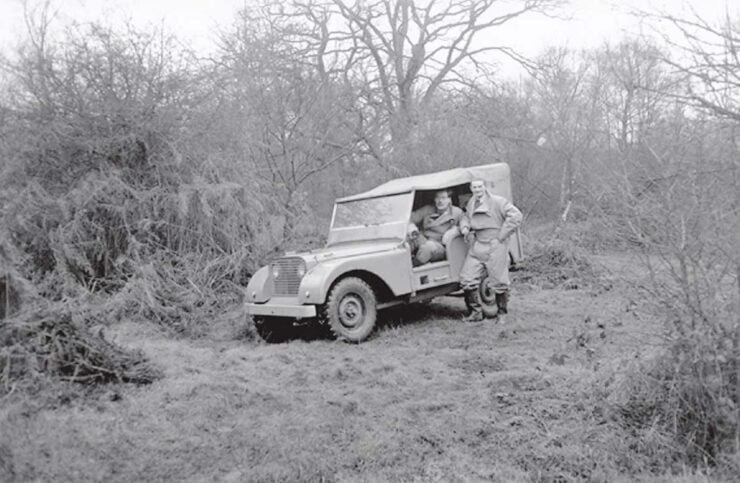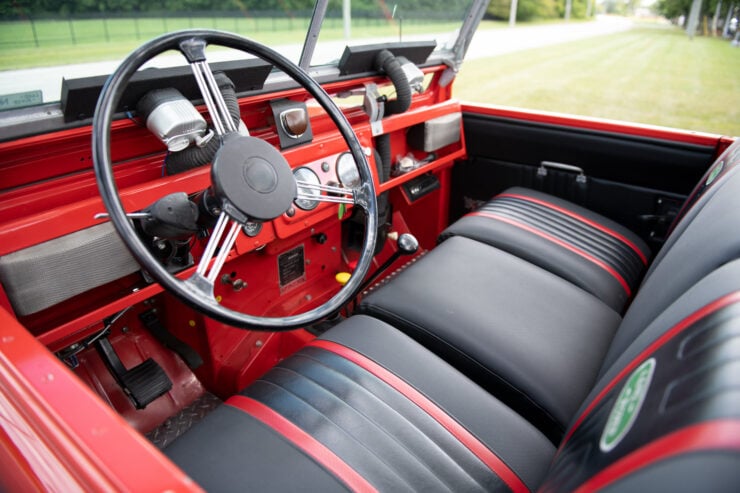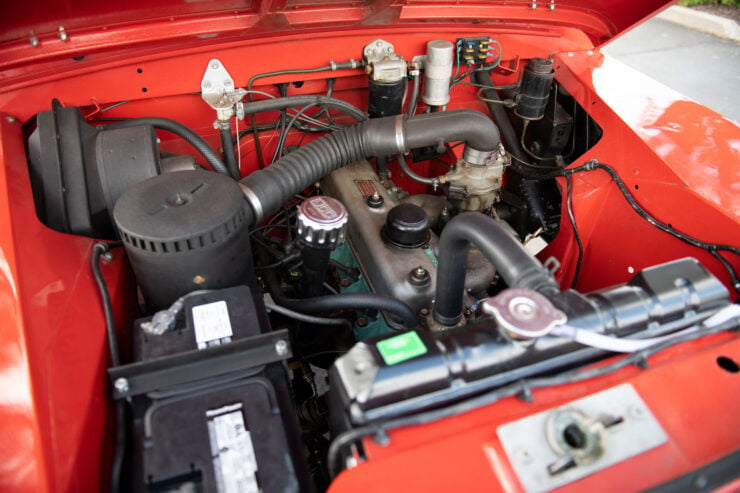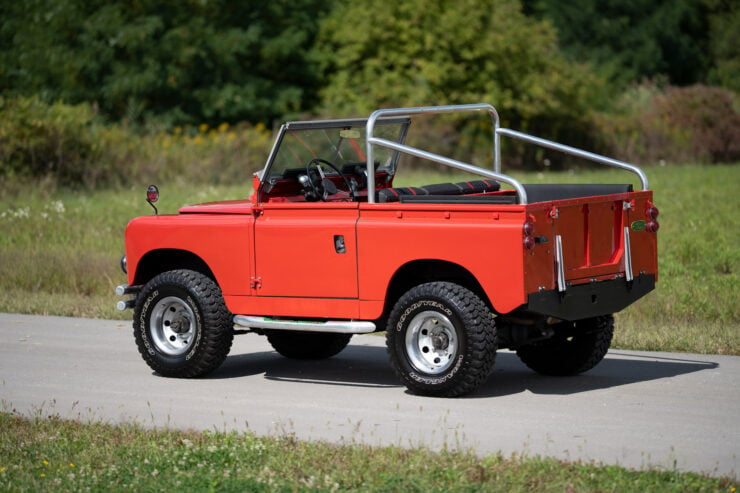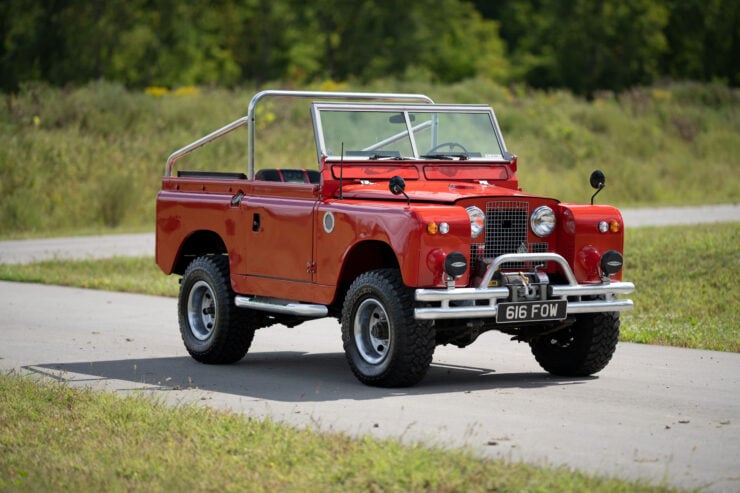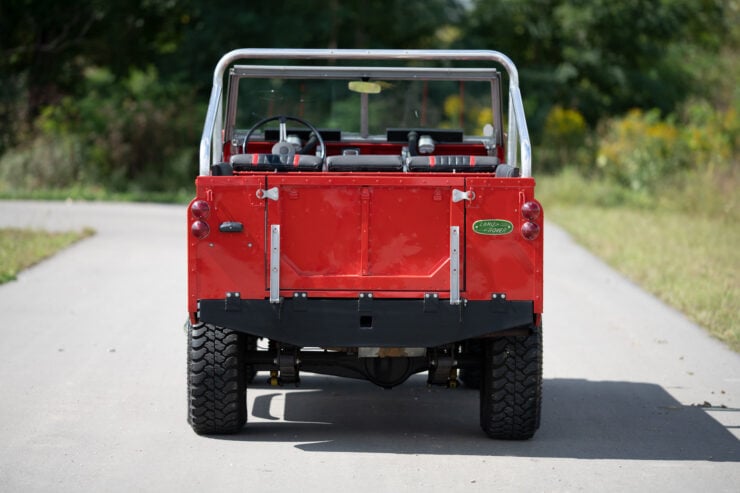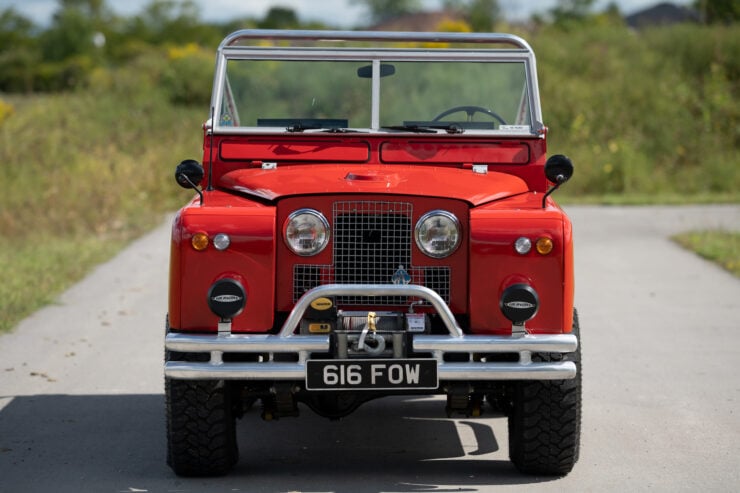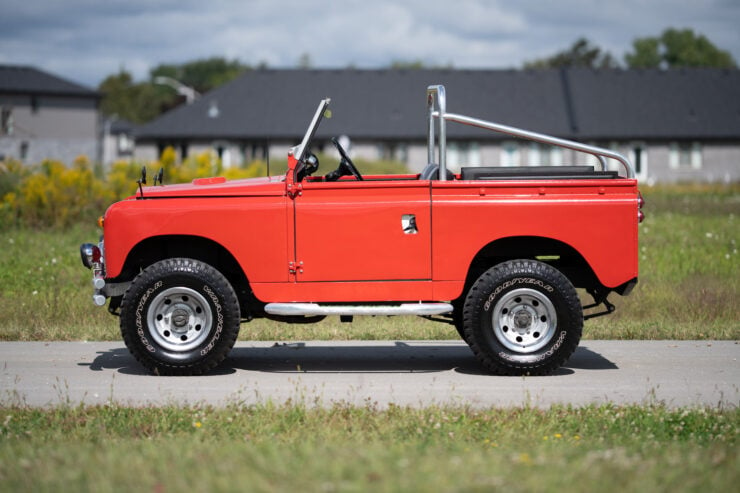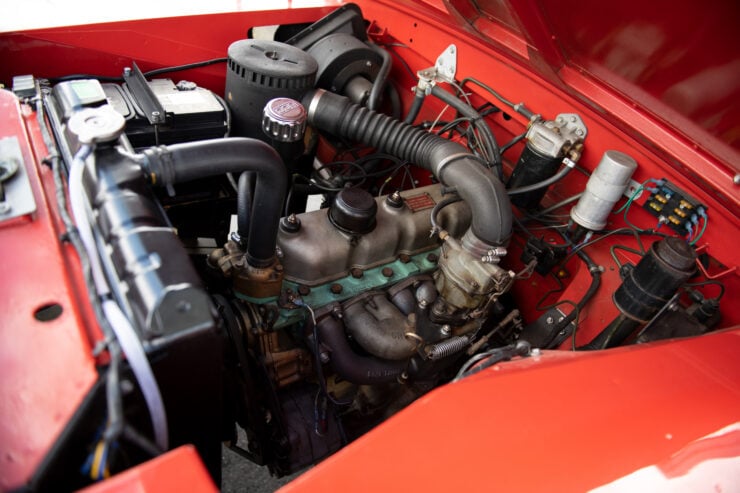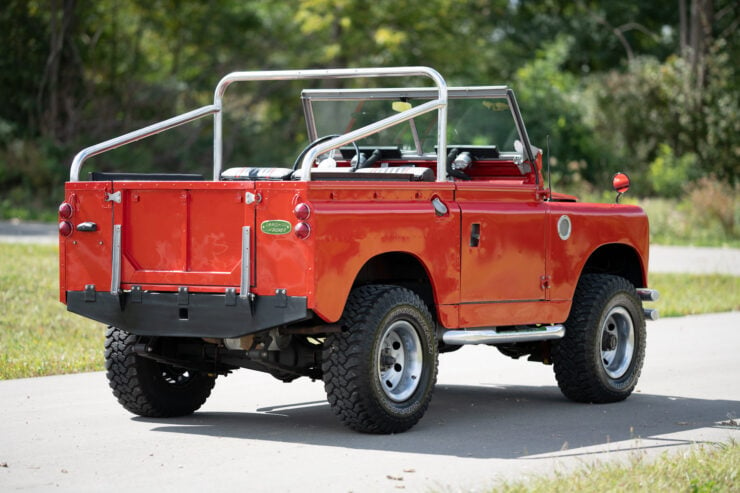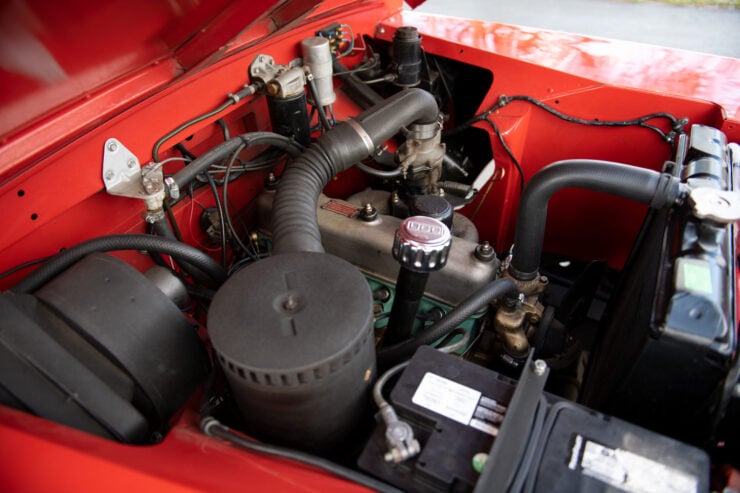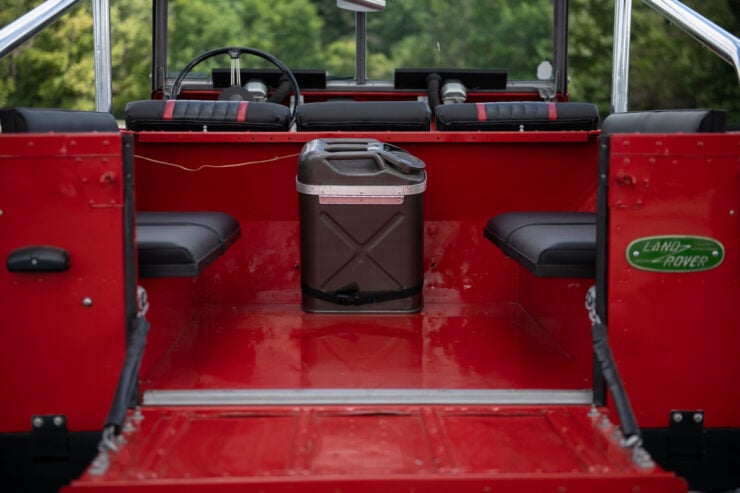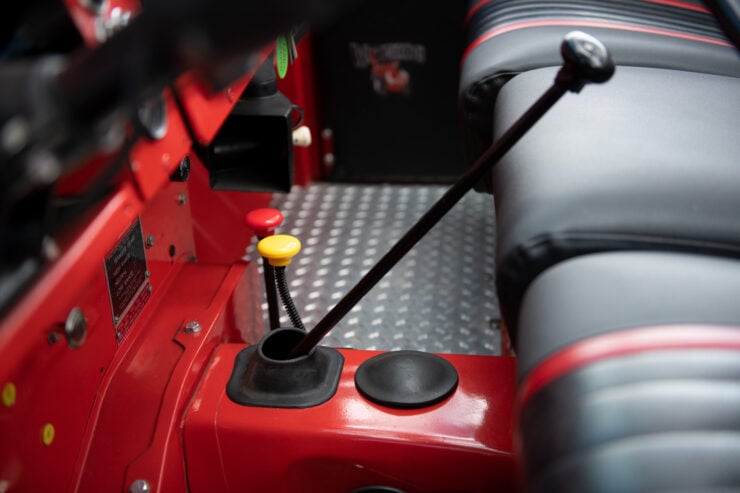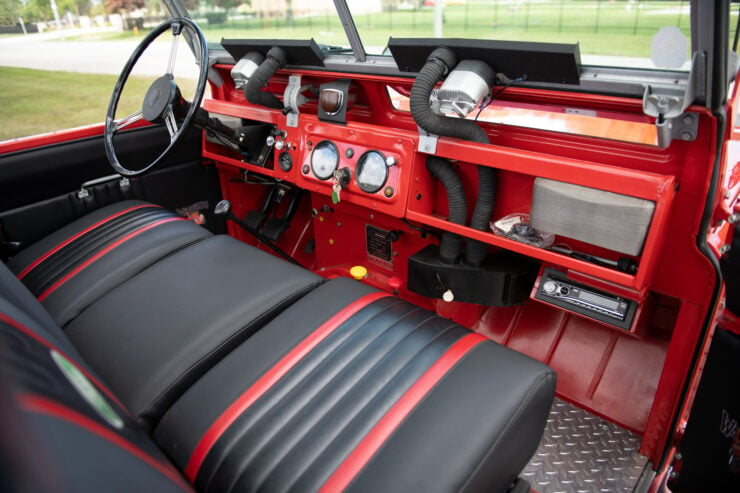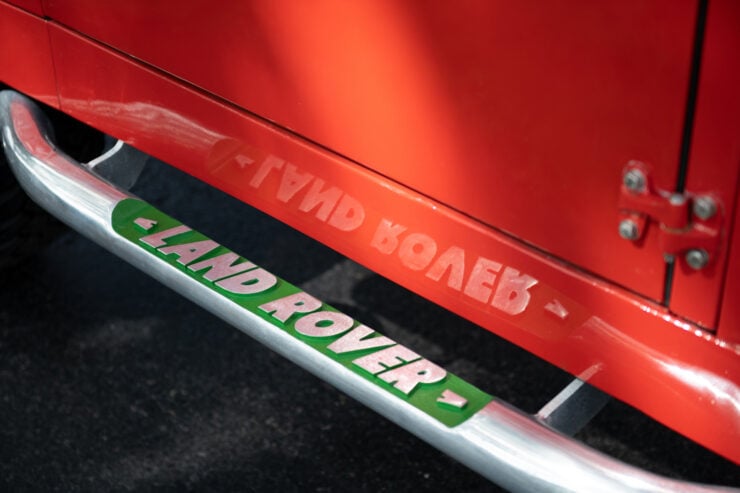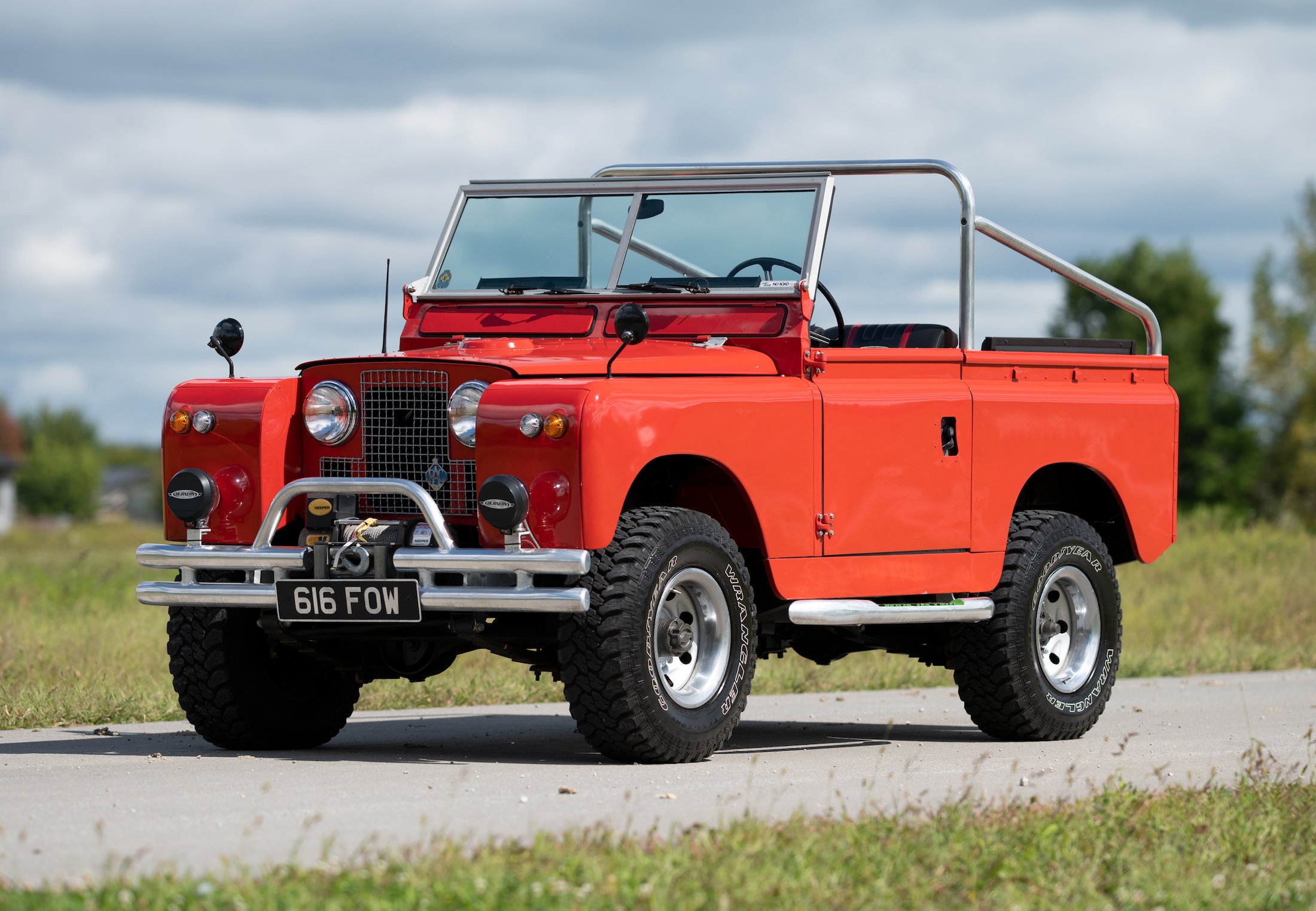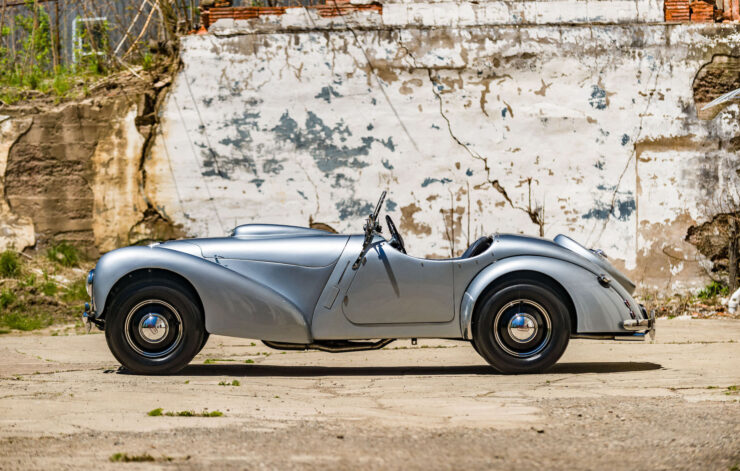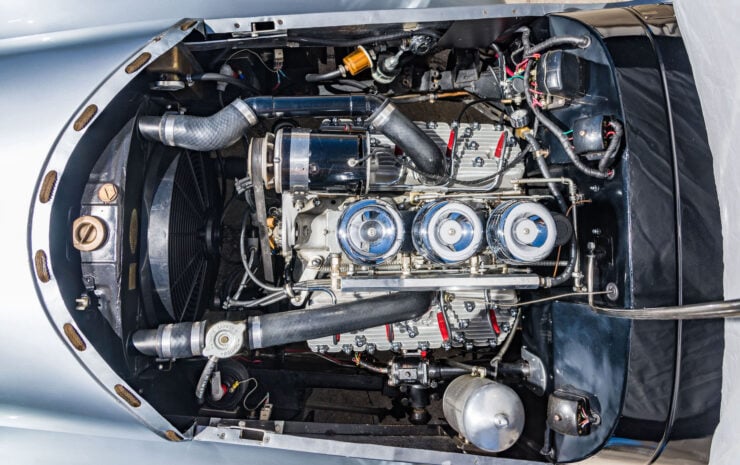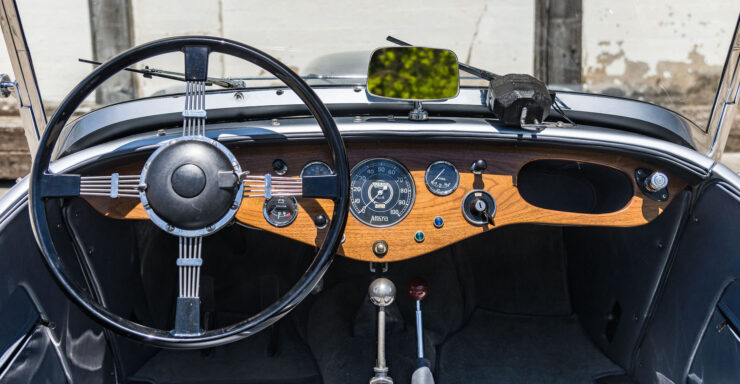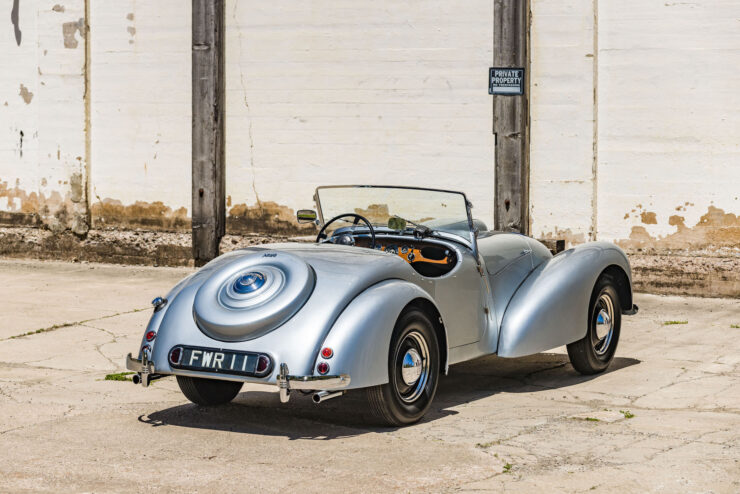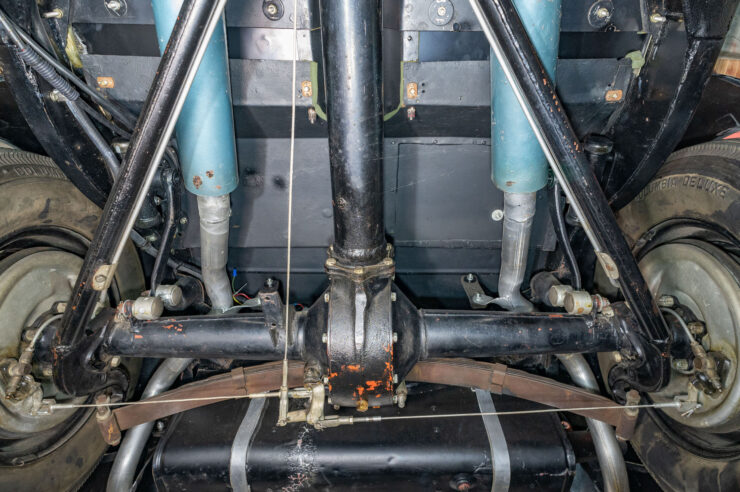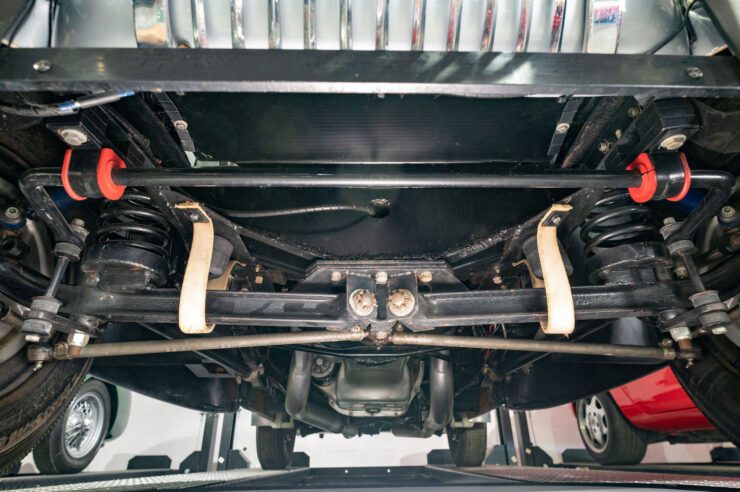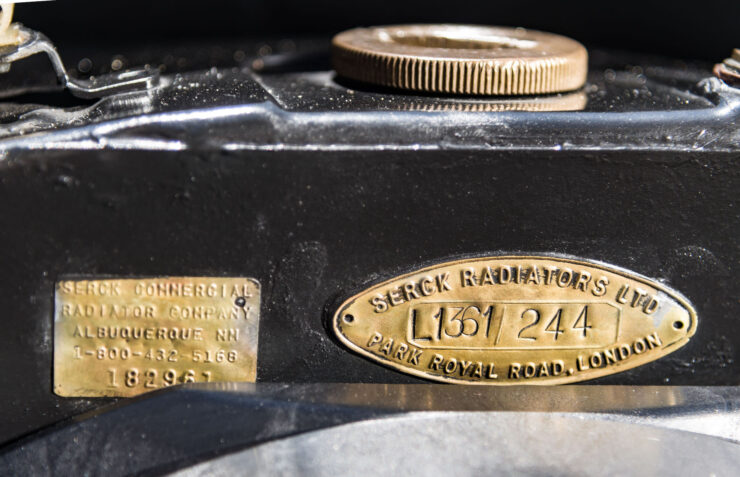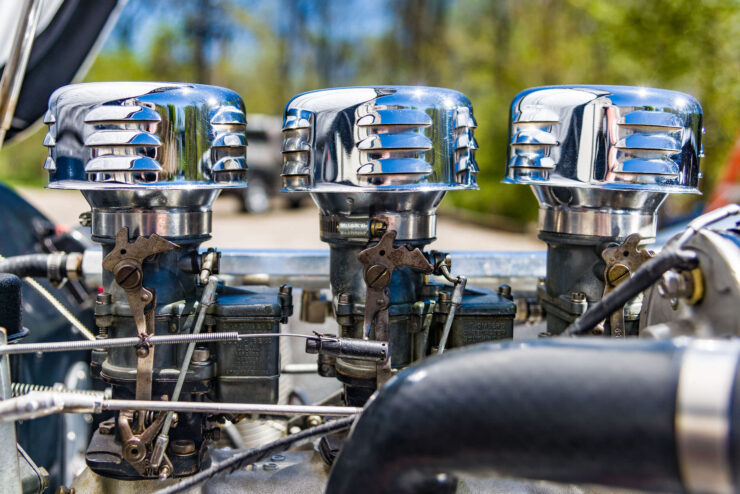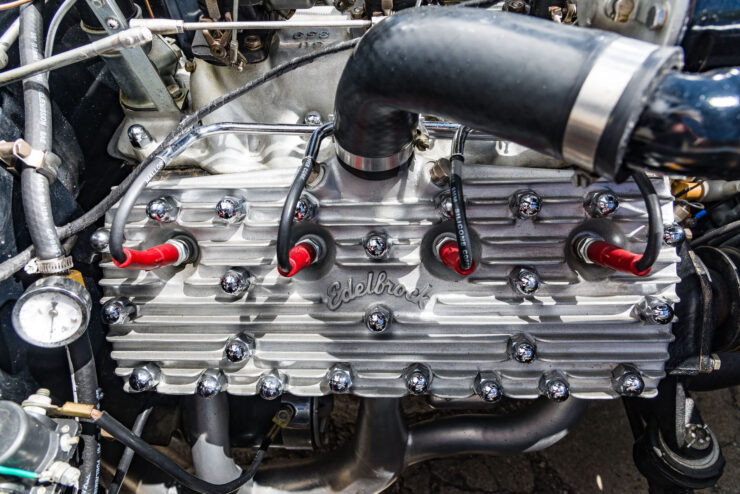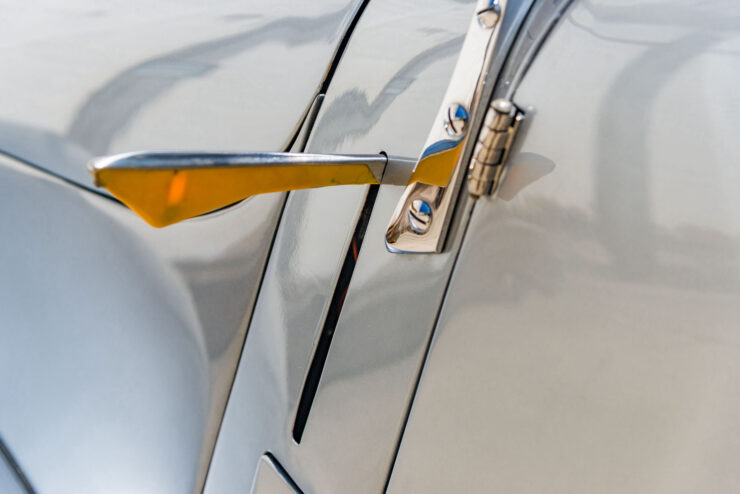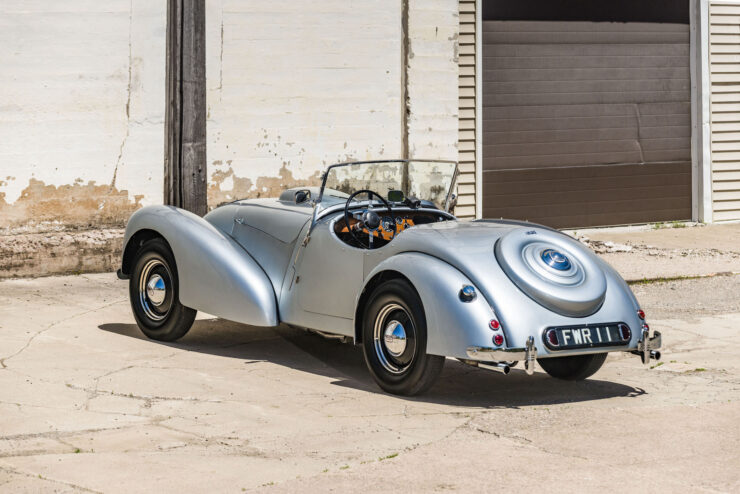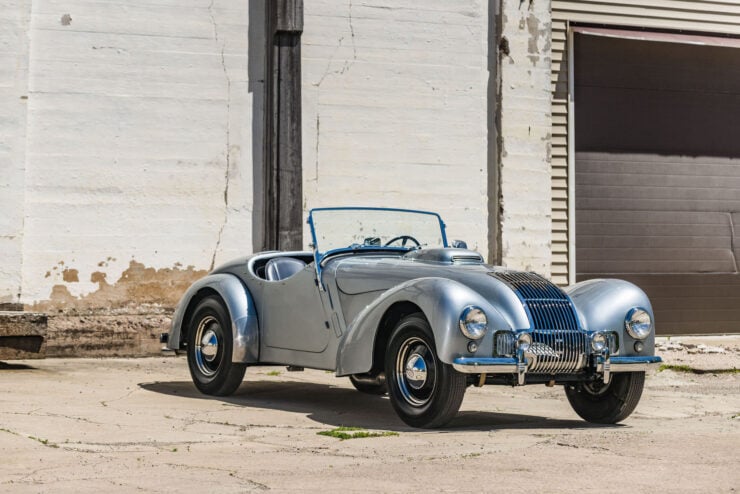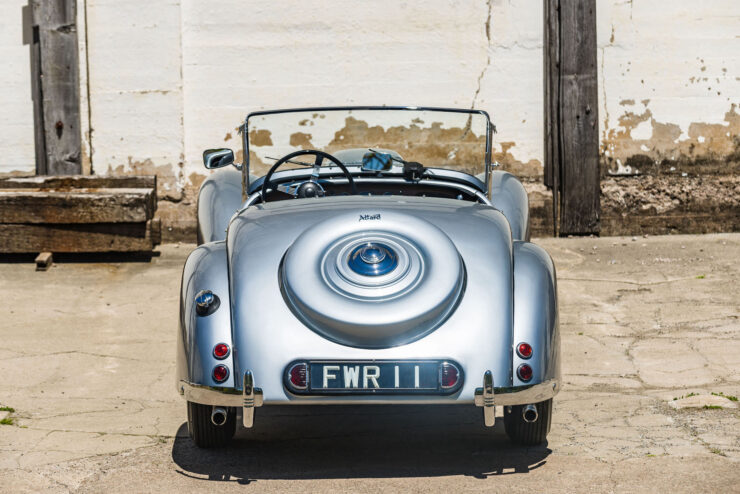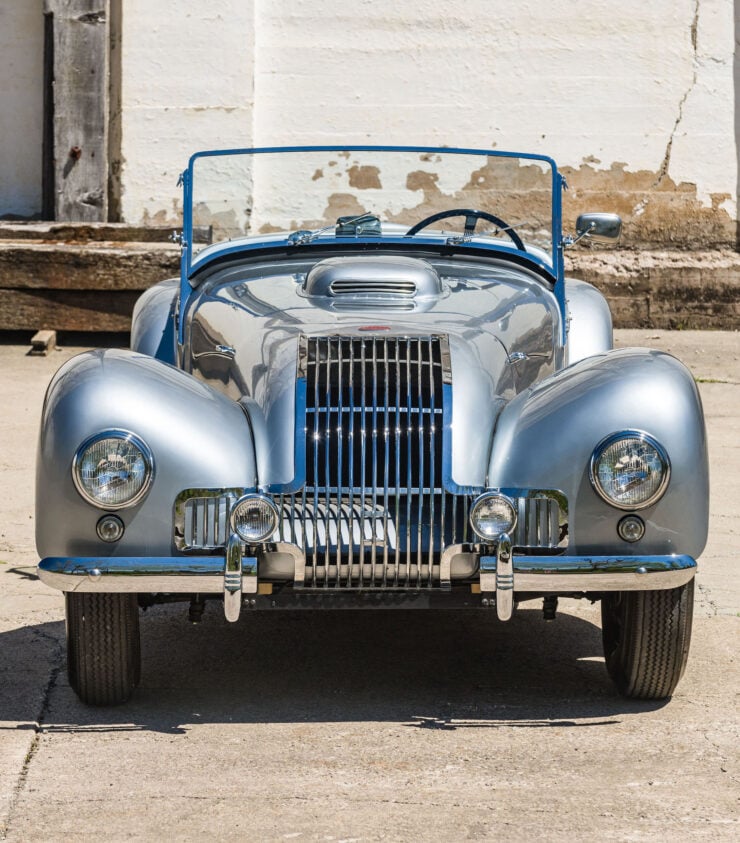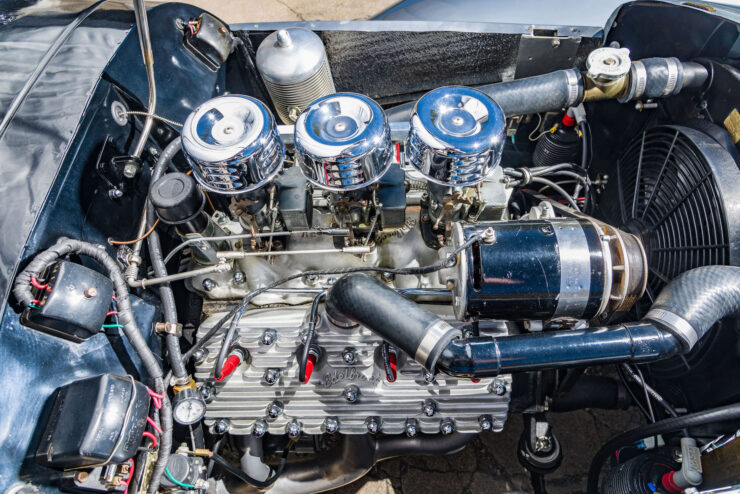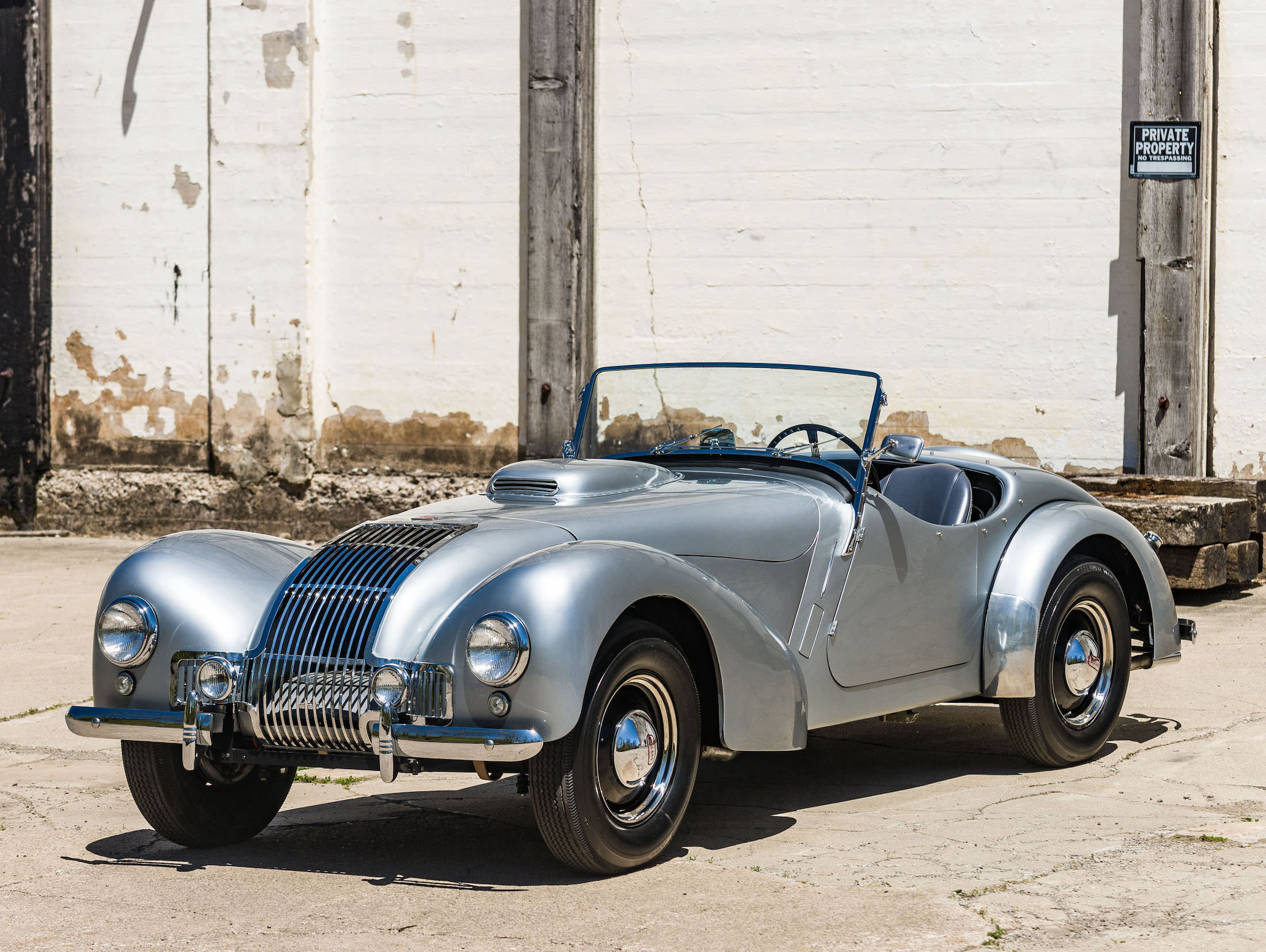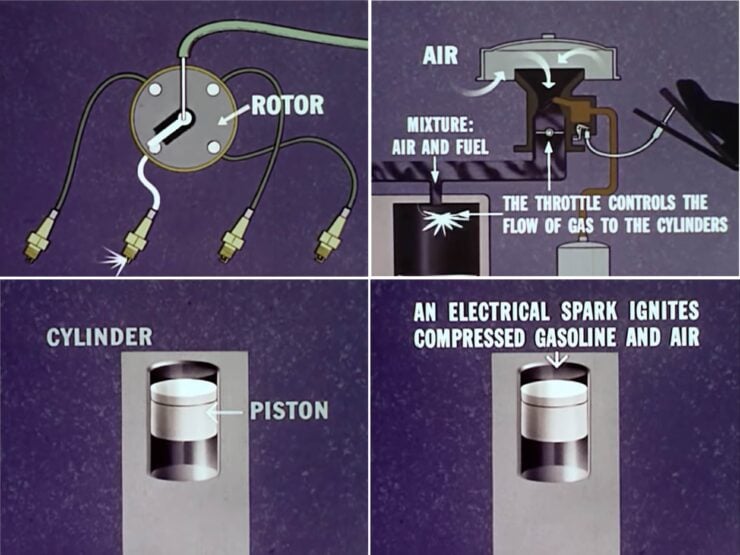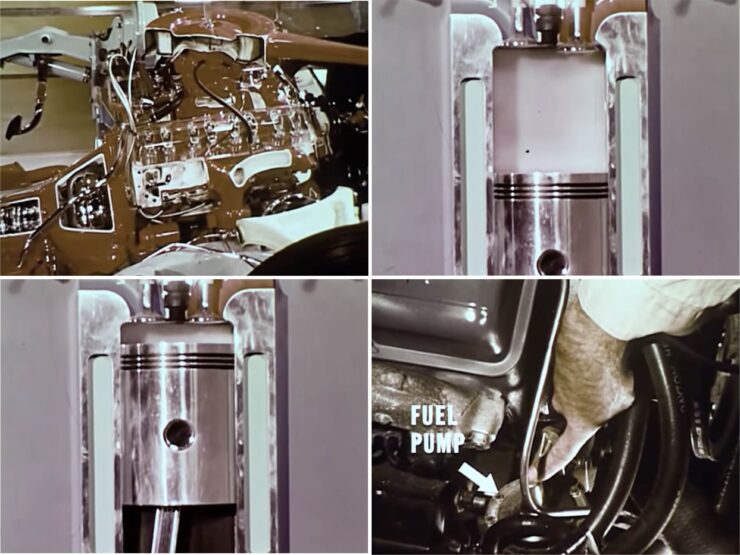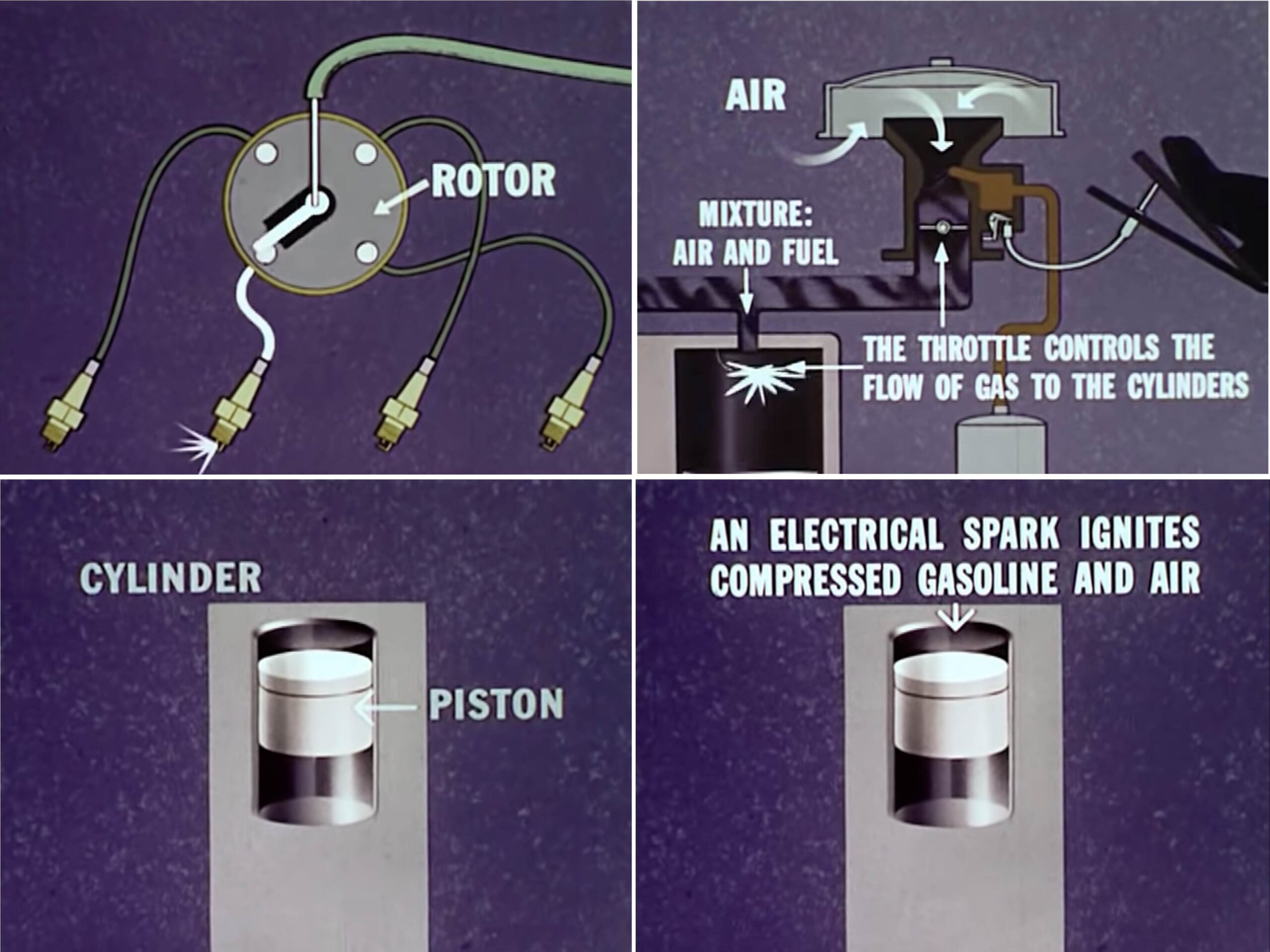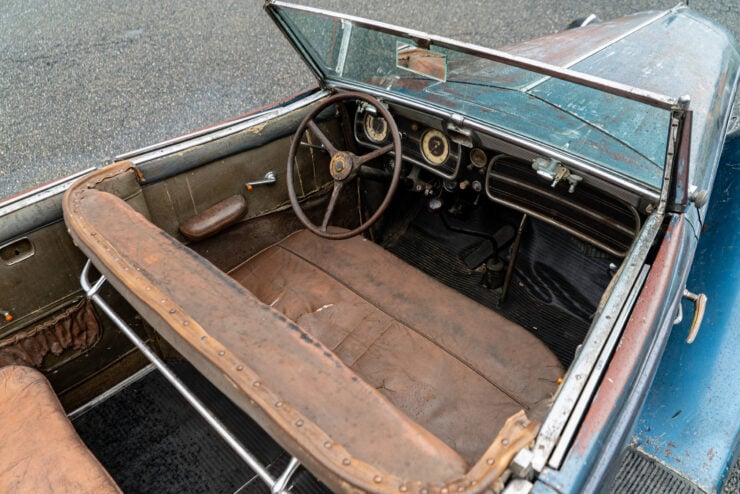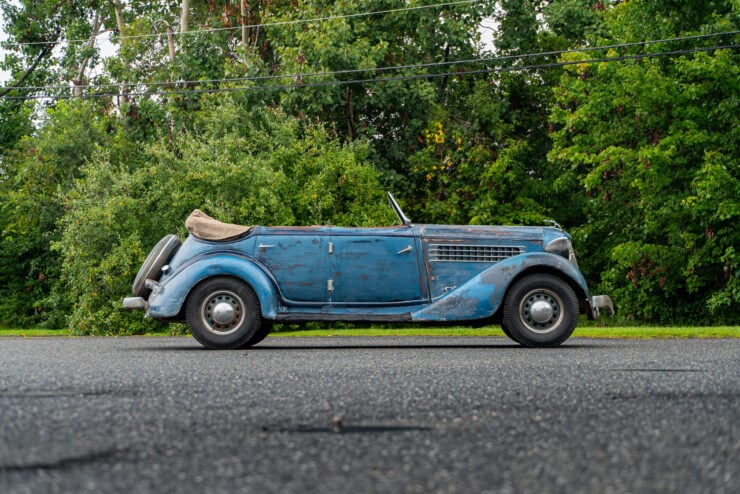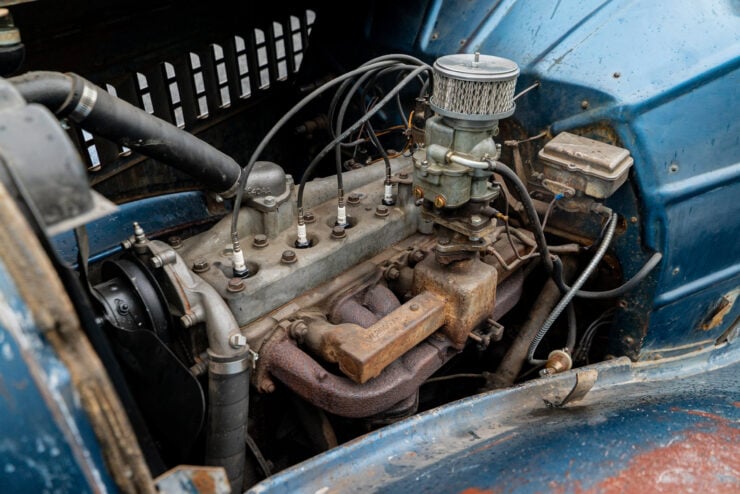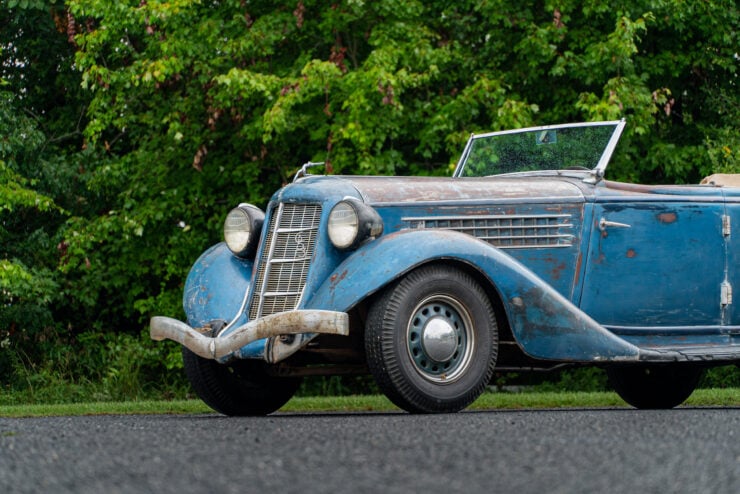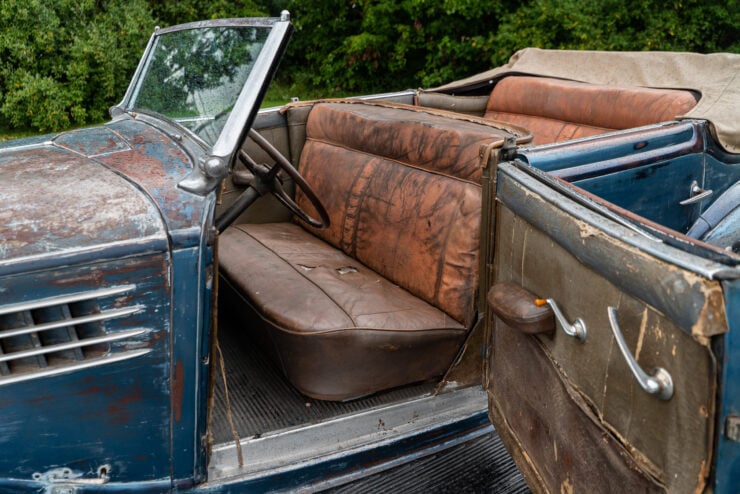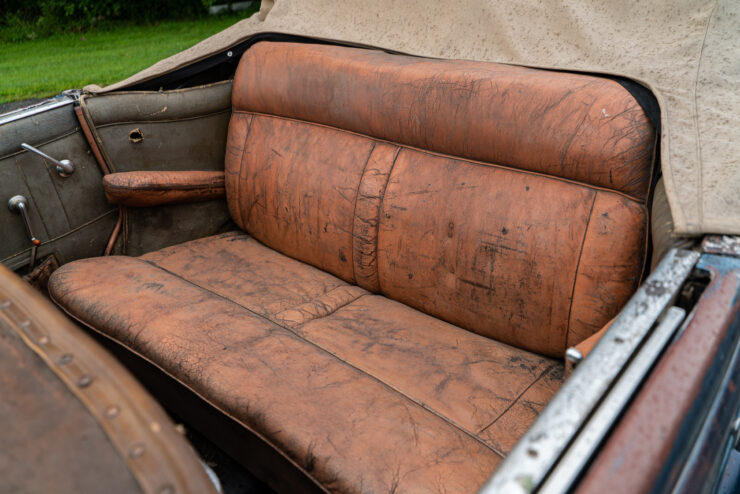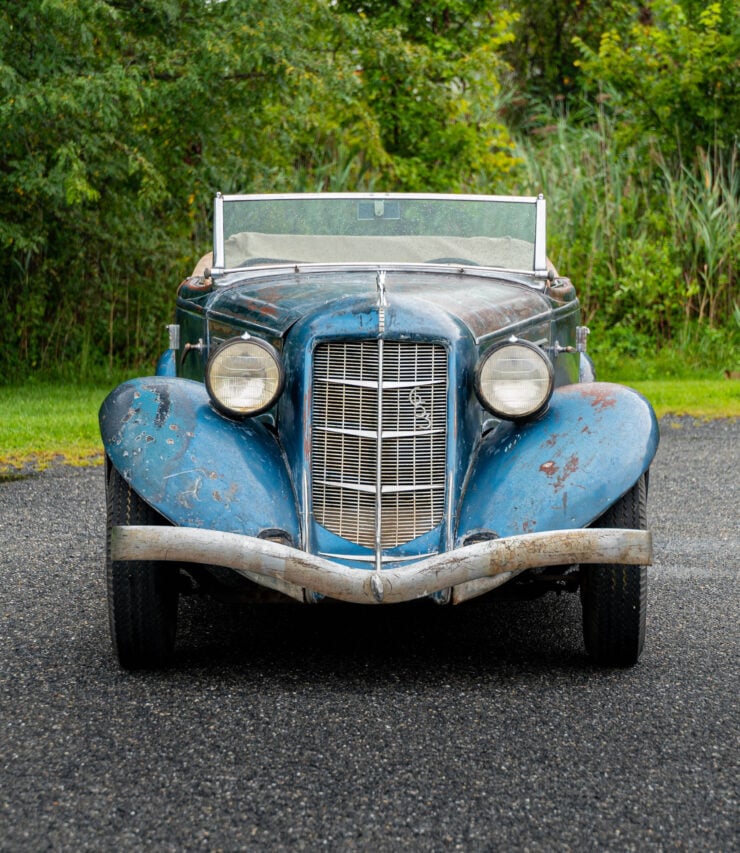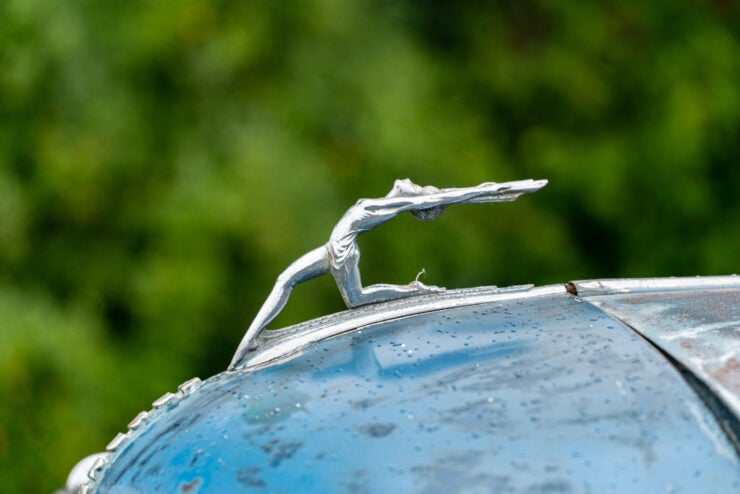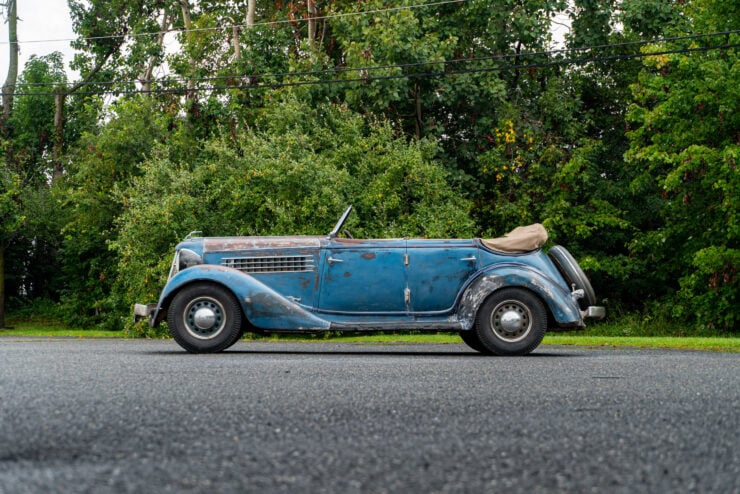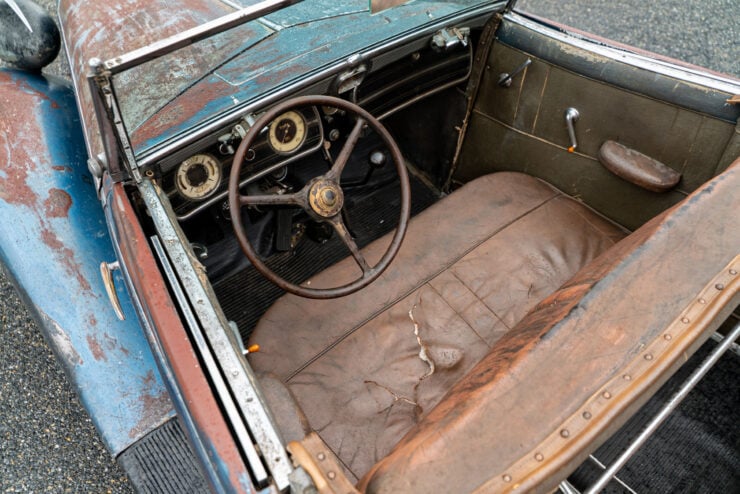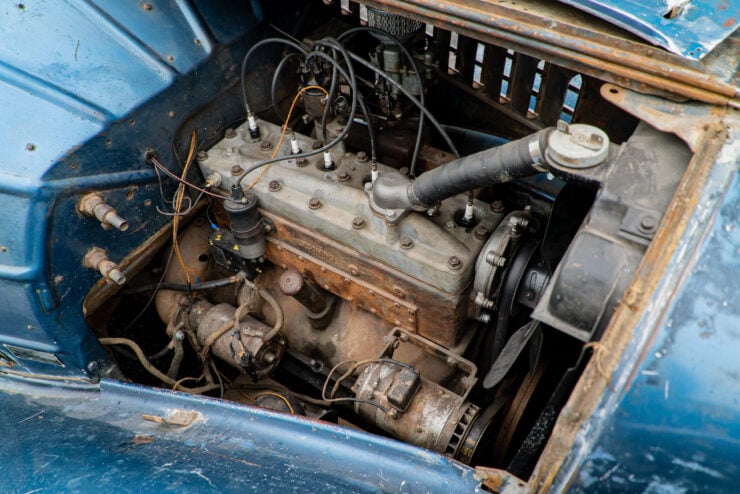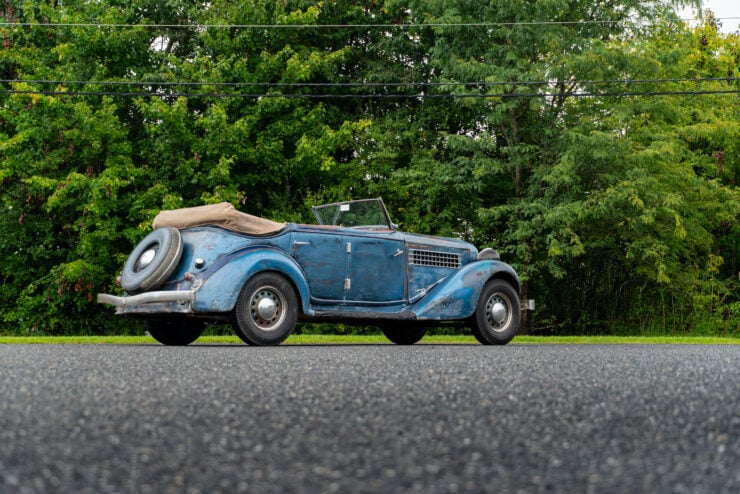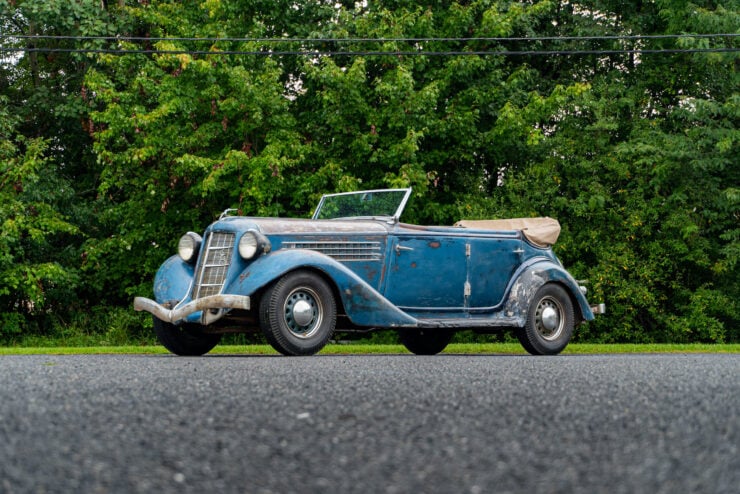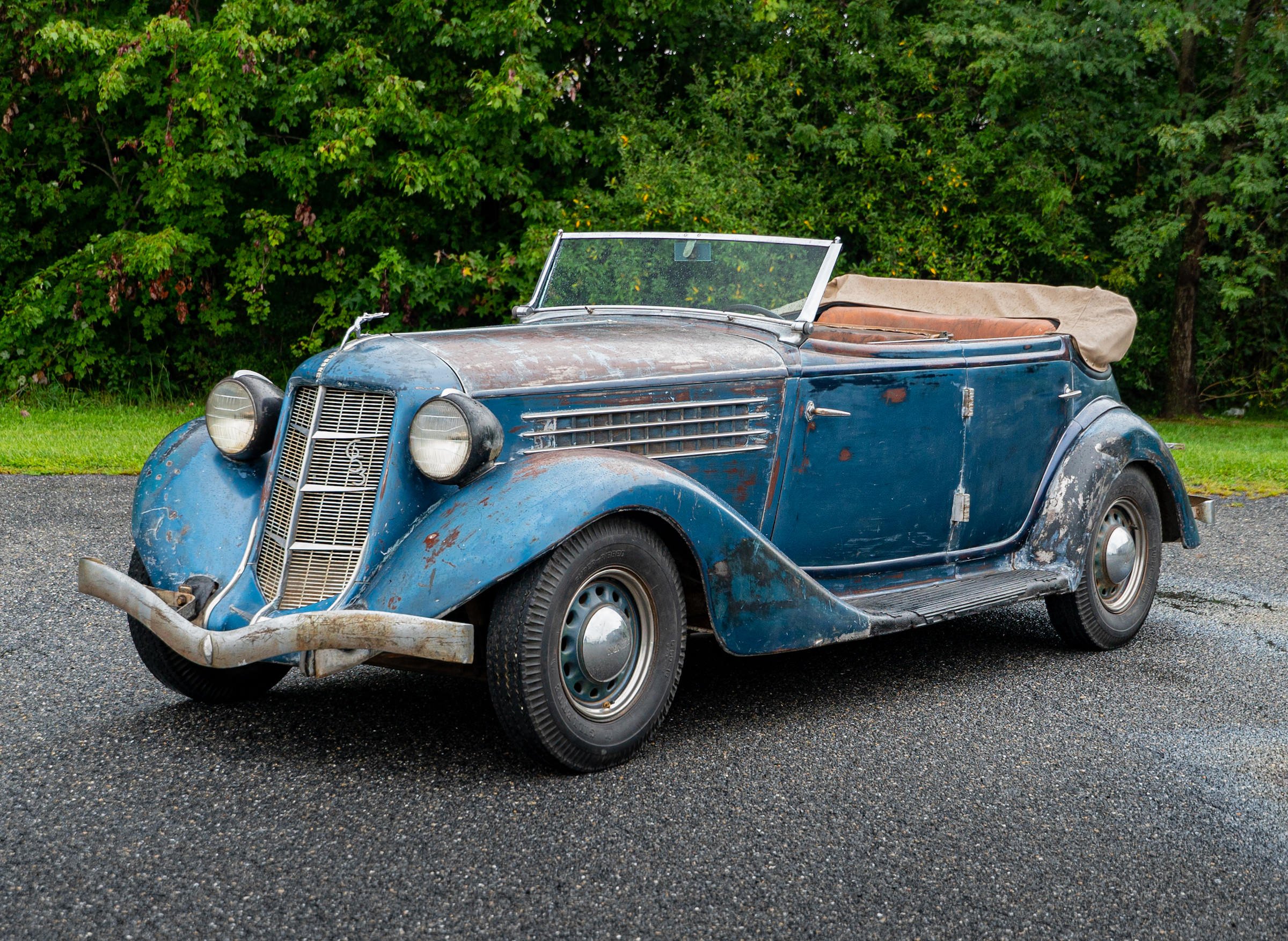In the early 1960s TV Tommy Ivo and a small crew set out to build a four-wheel drive dragster with four Buick nailhead V8s. It was designed to be the fastest dragster in history but the men had overlooked one crucial factor – traction.
In its original incarnation the car was called the “Showboat,” a nickname that was assigned by Hot Rod Magazine and secretly hated by Tommy. When the driver of the TV Tommy Ivo Showboat saw the lights go out and hit the gas all four wheels would spin simultaneously, engulfing the car in a cloud of tire smoke as it launched down the 1/4 mile.
Fast Facts – The Buick Wagon Master
- Originally called the Showboat, the car was later given a body inspired by the Buick station wagons of the era, becoming the Buick Wagon Master.
- The car is fitted with four Buick nailhead V8s, the two left hand engines work together to power the front wheels, and the two right hand engines work together to power the rear end.
- When the driver hit the gas the 2,000+ hp car would instantly overpower its tires, smoking them most of the way down the 1/4 mile.
- As a result of this traction problem the car wasn’t particularly competitive however it quickly became a crowd favorite for obvious reasons, and it spent years touring the country doing display runs.
TV Tommy Ivo – Building The Showboat
TV Tommy Ivo is one of the best remembered characters from the early days of American drag racing, he earned his nickname as he was a well-known television actor from the 1940s into the 1960s, appearing in shows like the Lone Ranger, Leave It To Beaver, Father Knows Best, Petticoat Junction, and Margie.
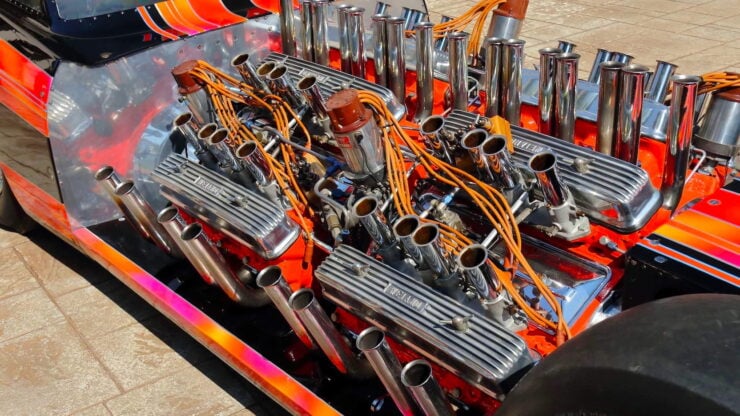
The four Buick nailhead V8s work in tandem in two pairs, the left two engines power the front wheels, and the right two engines power the rear two wheels.
Ivo got into drag racing in the 1950s and built a twin-engined, Buick-powered dragster that became the first car to break the 9 second barrier. It would go on to become the first gasoline-powered dragster to record speeds of 170 mph, 175 mph, and 180 mph.
In 1957 the National Hot Rod Association (NHRA) had banned the use of nitromethane fuel, and so drag racers were left scrambling to develop cars that ran on regular gasoline. Ivo’s solution to this was simple – more engines would equal more power, and thus more speed.
After building and successfully racing his twin-engined Buick dragster he decided that twice as many engines would be faster, and twice as many driven wheels would be faster still. Ivo hired Kent Fuller to design a new custom chassis that would accommodate four fuel-injected, 464 cubic inch Buick V8s.
The total displacement is 1,856 cubic inches or 30.4 liters and the car produced over 2,000 hp, no one is quite sure how much power it made because there wasn’t a dyno in America that could accommodate it due to its unusual four-wheel drive layout.
Unable To Race
When the car was completed and ready to race Ivo received the bad news that the TV studio he worked for wouldn’t let him race. It was too dangerous and it was felt that racing a four-engined dragster was an activity with a high risk of death or serious injury.
As it happens the studio executives were right, and one day years in the future Ivo would be severely injured while racing the car.
Above Video: This was the last time TV Tommy Ivo took the Wagon Master for a spin, years after his terrible accident driving the same car.
As he couldn’t race Ivo asked the young Don Prudhomme if he would consider doing it. Prudhomme jumped at the chance, establishing his own career while he was at it. It quickly became clear that the Showboat was too powerful for its tires, it would light up all four as the car accelerated and Ivo said “you just had to hope you were still pointing in the right direction when the smoke cleared.”
The physical size of the car combined with the prodigious power output and the obvious safety concerns led to the NHRA banning four-engined cars and essentially forcing the Showboat to become a demonstration car, not a competitor.
The Wagon Master
Ivo would go on to race a number of other single-engined cars very successfully well into the 1970s. A future owner of the Showboat would change the car by adding a faux Buick station wagon body to it, renaming it the “Wagon Master.”
Ivo would drive the car in this configuration a number of times including one run in Saskatoon in 1982 that resulted in him crushing three vertebra in his back after running over a lump in the asphalt caused by subsurface ice. It ended his racing career, but he would climb back behind the wheel of the Wagon Master one final time in 1996 for another display run – see the video of it above.
The Wagon Master is now being listed for sale for the first time in many years, it’s clear by looking at the images that it’s in excellent show-ready condition however the operational aspect of the car isn’t mentioned. Anyone wanting to use the car for display runs would need to investigate this before bidding.
If you’d like to read more about this highly unusual four-wheel drive, four-engined car you can click here to visit the listing on Mecum.
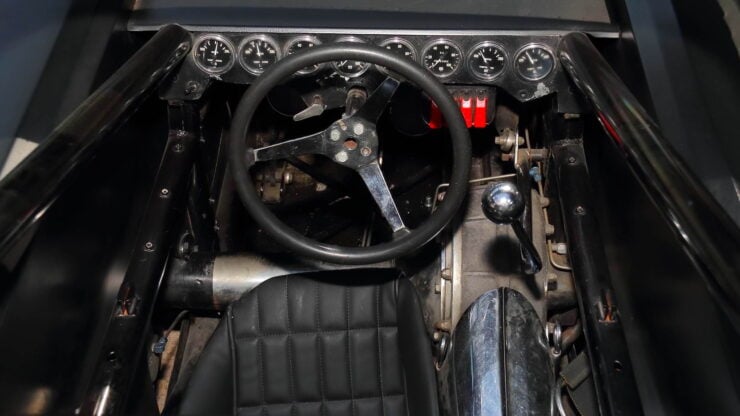
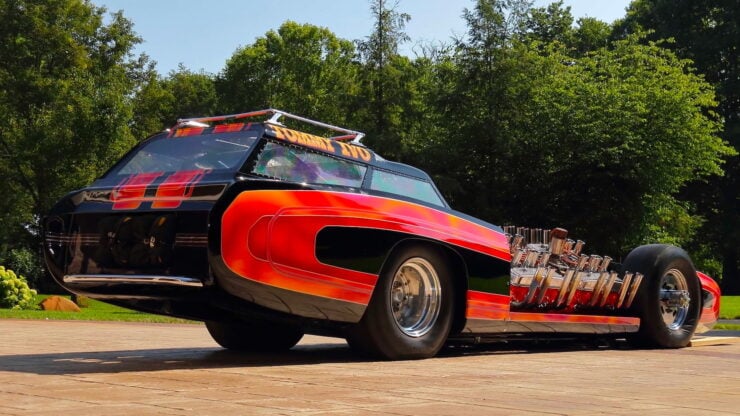
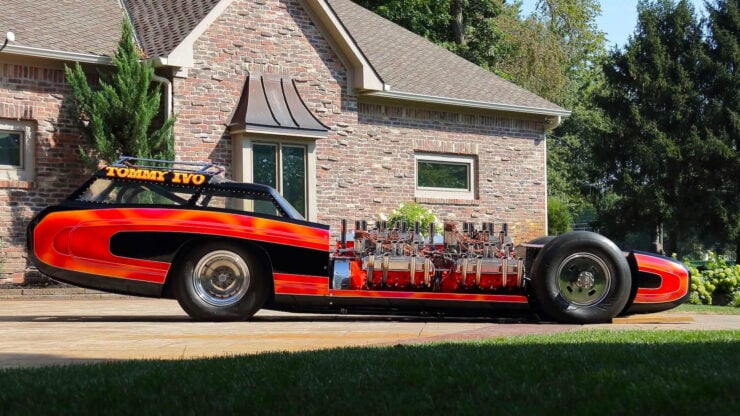
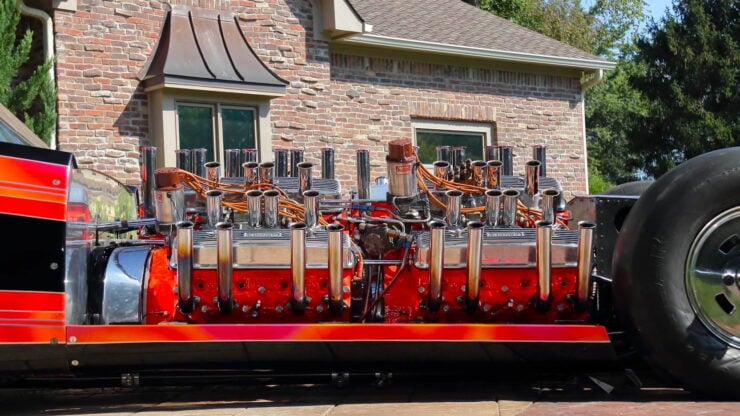
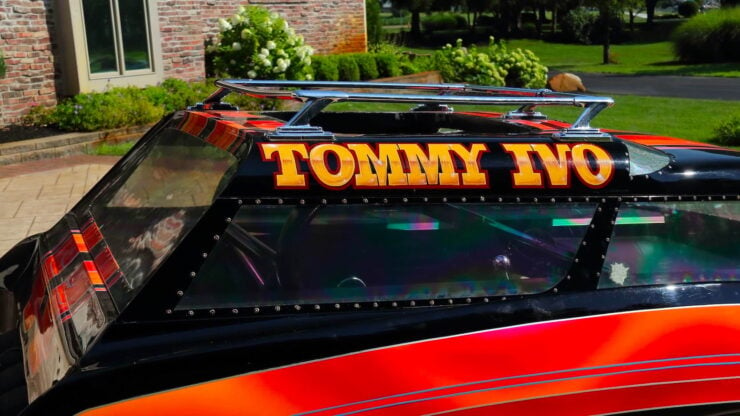
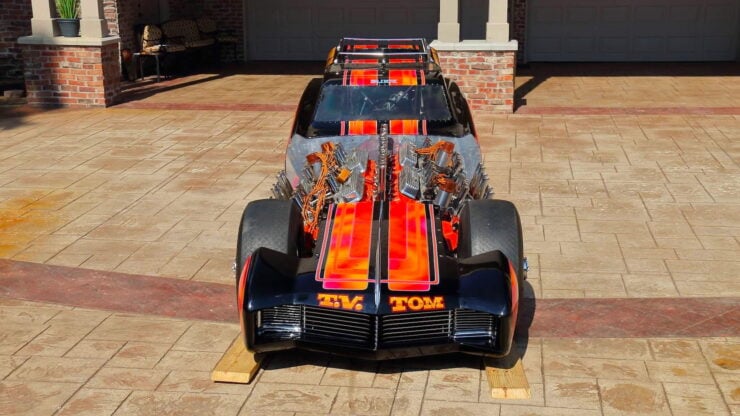
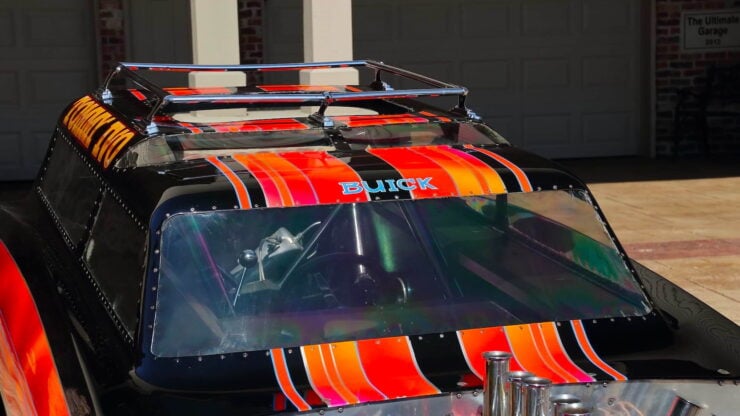
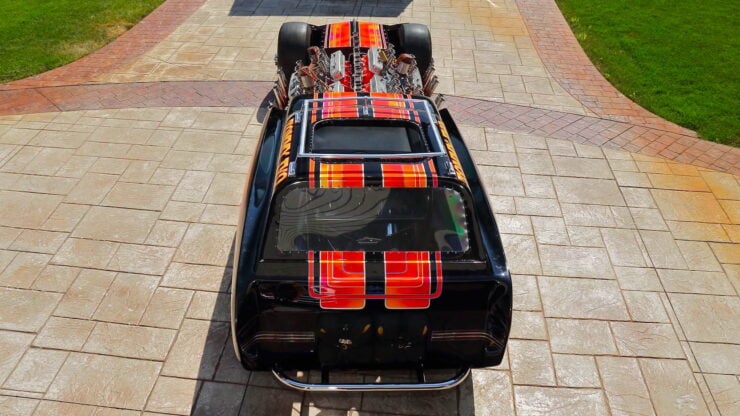
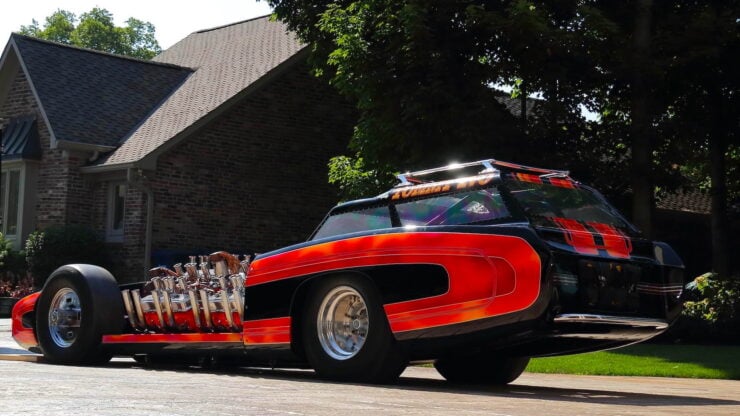
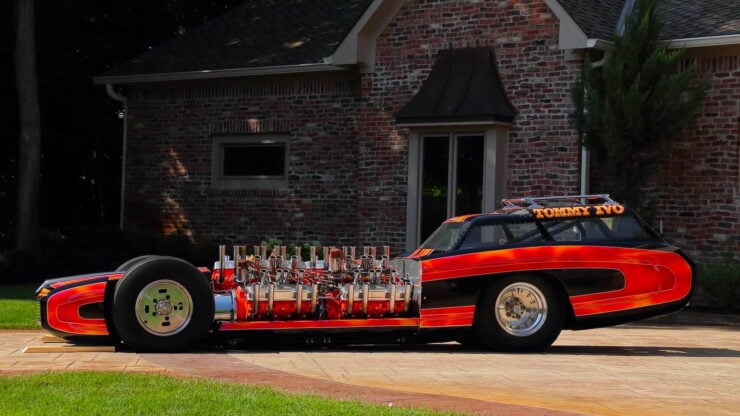
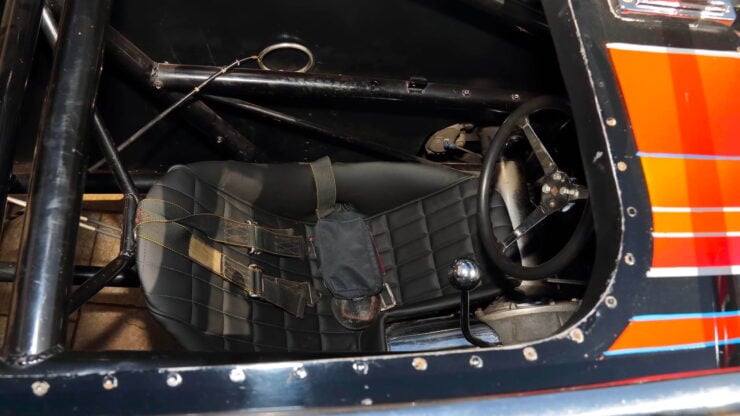
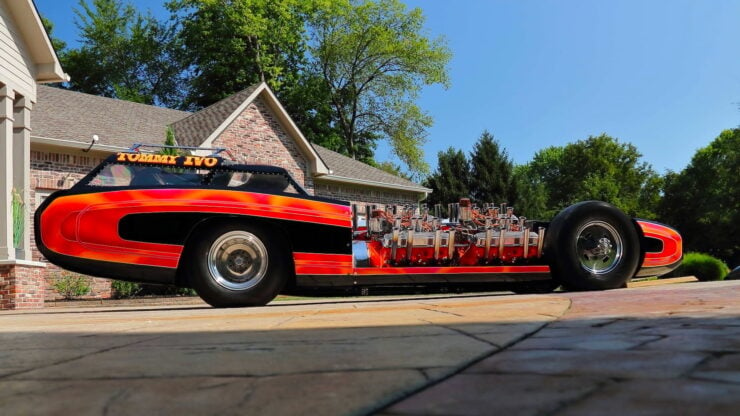
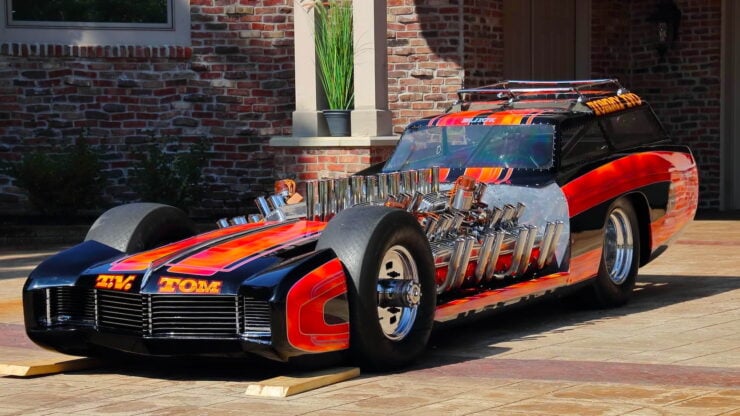
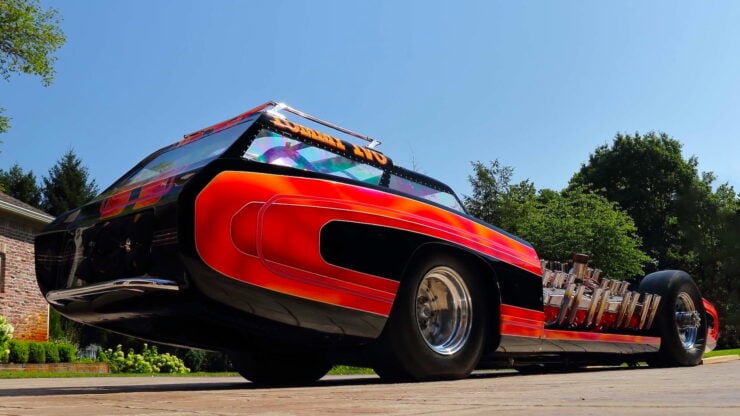
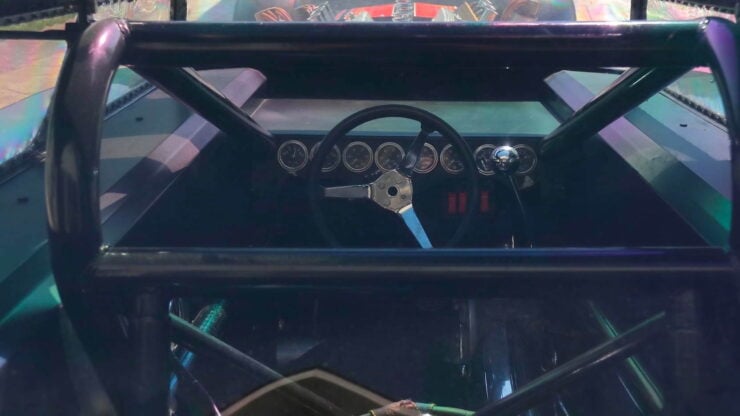
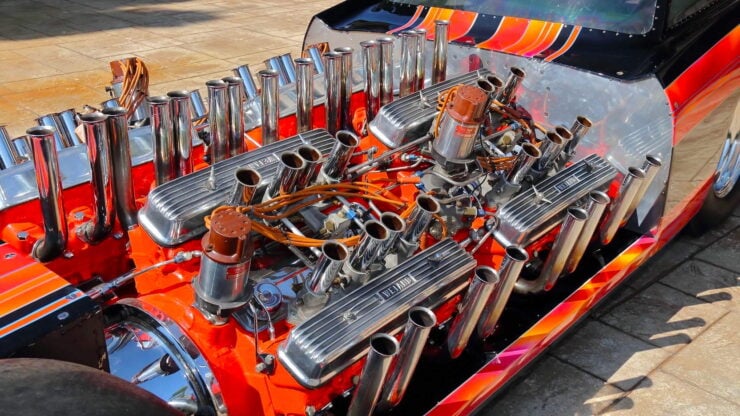
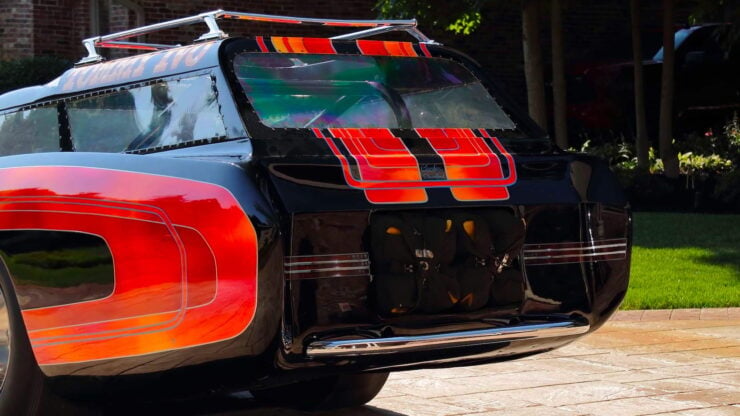
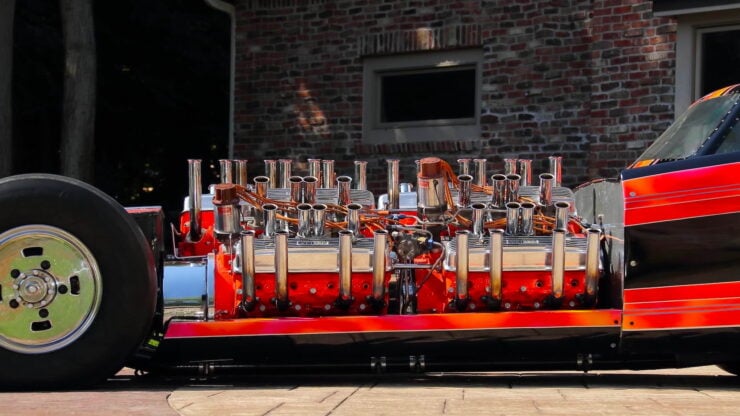
Images courtesy of Mecum
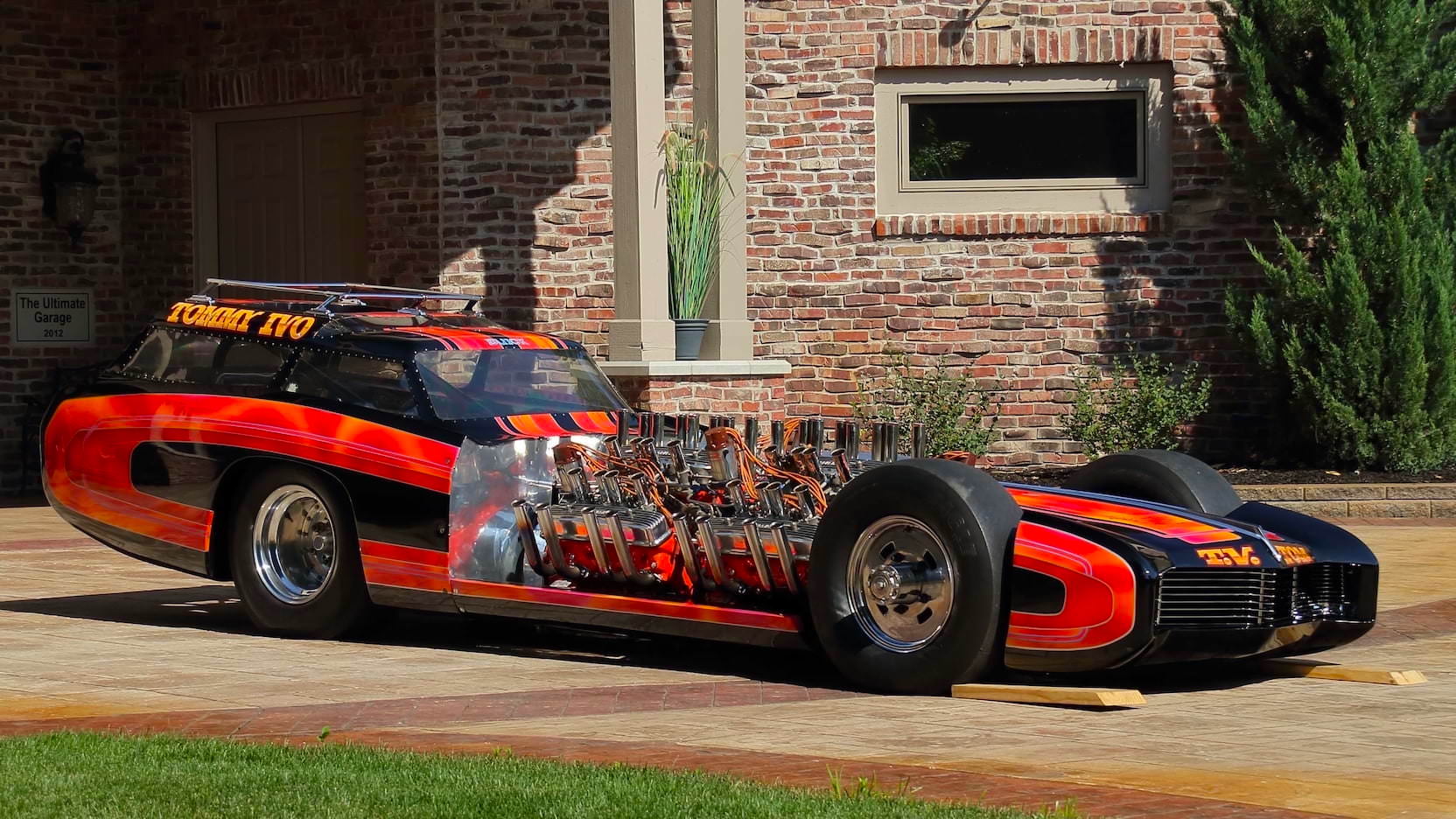
The post TV Tommy Ivo’s Wagon Master: The 4×4 Dragster With Four Engines And 2,000+ HP appeared first on Silodrome.
from Silodrome https://silodrome.com/tv-tommy-ivo-wagon-master/
via gqrds
